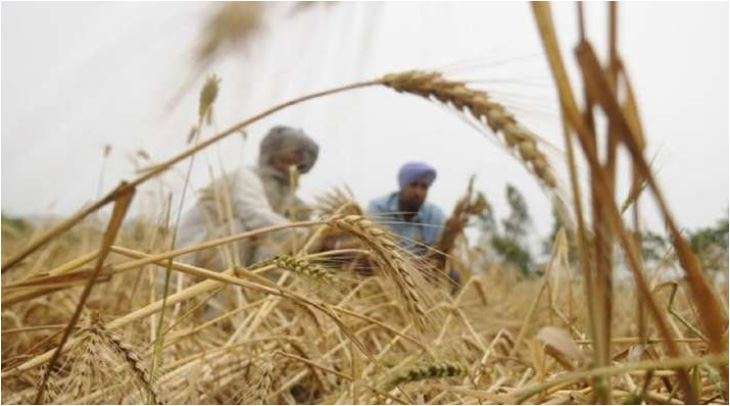India, the world's second-largest wheat producer, has so far harvested crop in 67 per cent of the sown area of 310 lakh hectare in the country, taking safety precautions against COVID-19.
"Amidst the uncertainty prevailing today, the one activity giving hope is agricultural activity, which is also providing the reassurance of food security. All throughout India, numerous farmers and agriculture labour are sweating and toiling against all adversities," the agriculture ministry said in a statement.
Farmers' silent efforts, coupled with timely intervention by the central and state governments, have ensured that there is minimal or no disruption to harvesting activities and the continued sowing of summer crops, it added.
As per the latest data, wheat, the main rabi (summer) crop, has been completed 90-95 per cent in Madhya Pradesh, 80-85 per cent in Rajasthan, 60-65 per cent in Uttar Pradesh, Punjab and Haryana, so far, it said in a statement.
Harvesting is at peak in key wheat-growing states of Haryana, Punjab and Uttar Pradesh and is likely to be completed in the current month, the ministry said.
Punjab has deployed 18,000 combine harvesting machines, while Haryana has deployed 5,000 combine machines for harvesting and threshing.
Meanwhile, harvesting of winter-sown pulses such as gram, lentil, urad, moong and pea has been completed in 161 lakh hectare.
However, in the case of sugarcane sown in 54.29 lakh hectare, the crop has been harvested in Maharashtra, Karnataka, Gujarat, Andhra Pradesh, Telangana and Punjab.
In states of Tamil Nadu, Bihar, Haryana and Uttarakhand, 92-99 per cent harvesting has been completed. In Uttar Pradesh, 75-80 per cent has been completed and this will continue till mid-May, the ministry added.
With regard to oilseed crops, rape mustard seed sown in 69 lakh hectare has been harvested in Rajasthan, Uttar Pradesh, Madhya Pradesh, Haryana, West Bengal, Jharkhand, Gujarat, Chhattisgarh, Bihar, Punjab, Assam, Arunachal Pradesh and Jammu and Kashmir.
Whereas groundnut has been harvested in almost 90 per cent of the sown area of 4.7 lakh hectare.
However, harvesting of rabi rice, cultivated in 28 lakh hectare, is in initial stages in Andhra Pradesh, Assam, Chhattisgarh, Gujarat, Karnataka, Kerala, Odisha, Tamil Nadu, Telangana, Tripura and West Bengal.
This is because the grain is still in the filling stage and harvesting time would vary, it added.
Wherever the harvesting has been completed, farmers are preparing the field for sowing of kharif (summer) crops. So far, farmers have sown kharif crops in 15 per cent more area at 52.78 lakh hectare from the year-ago period.
The ministry said while the Ministry of Home Affairs issued the consolidated guidelines on the measures to be taken for containment of COVID-19, it also ensured smooth functioning of agricultural operations.
Stating that timely interventions and exemptions have resulted in optimistic results, the ministry said the standard operating procedures have been communicated to farmers for their safety and keeping social distancing while undertaking farm-related activities, it said.
As a result of the proactive steps taken, both harvesting activities of the rabi crop and sowing activities of summer crops are being undertaken in a systematic manner, it added.

